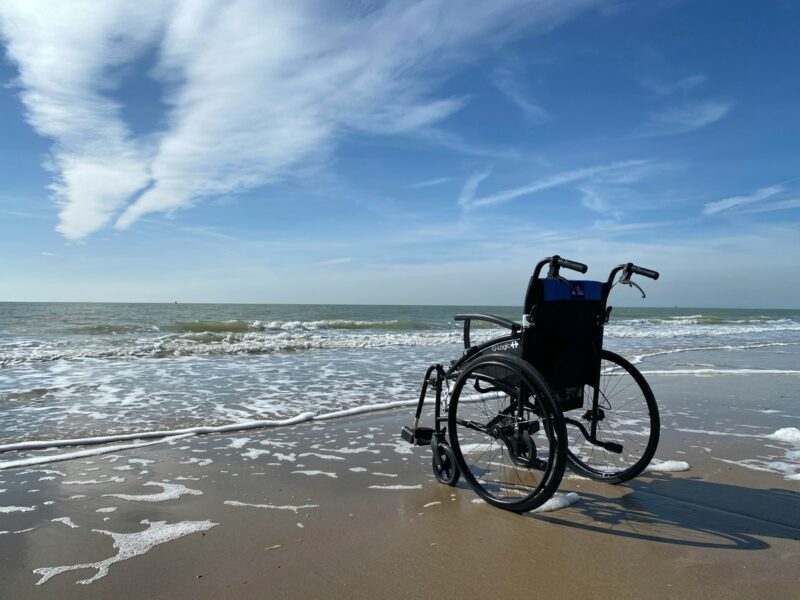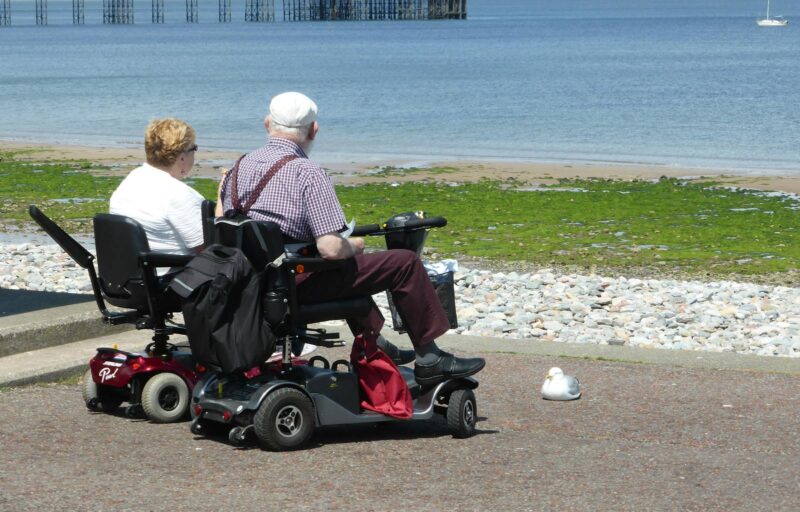Traveling with a disability doesn’t mean missing out on amazing experiences. Many destinations now offer accessible destinations for visitors with mobility challenges. Travel companies are creating vacation packages tailored for travelers with disabilities to over 80 destinations worldwide.
You can explore beautiful cities, natural wonders, and cultural sites with the right planning. From wheelchair-friendly beaches to museums with audio guides, there are more choices than ever.
Remember, every traveler’s needs are unique. This post gives ideas, not medical advice. Always check with your doctor and the specific locations before booking. With some research, you can find the perfect accessible destination for your next adventure.
Table of Contents
ToggleCriteria For Selecting Accessible Destinations
Choosing the right accessible destination involves careful consideration of key factors and personal needs. Let’s explore the essential criteria and tips for finding truly inclusive travel spots.
Explanation Of Key Criteria For Determining Accessibility
When evaluating a destination’s accessibility, focus on several crucial aspects. Look for places with wheelchair-friendly infrastructure, including ramps, elevators, and smooth sidewalks. Check if popular attractions and hotels have accessible entrances and bathrooms.
Consider the availability of accessible public transportation. Cities with good public transit systems and plenty of wheelchair-accessible taxis make getting around much easier.
Pay attention to the terrain. Avoid destinations with lots of steep hills or uneven surfaces like cobblestones, which can be challenging for wheelchair users and those with mobility issues.
Lastly, research the availability of medical facilities and support services in case of emergencies.
Importance Of Considering Personal Needs And Preferences
Your specific needs and preferences play a big role in choosing the right destination. Think about what type of assistance you might require and whether the location can provide it.
If you have visual impairments, look for destinations that offer audio guides or tactile exhibits at museums and attractions. For those with hearing impairments, check if popular venues provide sign language interpretation or captioning services.
Consider your comfort level with different environments. Some people prefer bustling cities with many amenities, while others enjoy quieter natural settings. Choose a destination that aligns with your interests and comfort zone.
Keep in mind the climate. Extreme temperatures or humidity can affect some health conditions, so pick a destination with weather that suits your needs.
Tips For Researching And Verifying Accessibility Information
Start your research by checking official tourism websites for accessibility information. Many cities now have dedicated sections about inclusive travel options.
Read reviews from other travelers with disabilities. Look for detailed accounts of their experiences, not just general ratings.
Contact hotels, attractions, and tour operators directly to ask specific questions about their accessibility features. Don’t rely solely on website information, which may be outdated.
Use specialized travel agencies that focus on accessible travel. They often have firsthand knowledge of destinations and can provide valuable insights.
Consider joining online forums or social media groups for travelers with disabilities. These communities can be great sources of up-to-date information and personal recommendations.
Top 5 Accessible Travel Destinations
Traveling with disabilities doesn’t mean limiting your options. Many cities around the world have made great strides in accessibility, offering exciting experiences for all visitors. Let’s explore some top destinations that cater to travelers with diverse mobility needs.
Barcelona, Spain
Barcelona stands out as a wheelchair-friendly city with its smooth sidewalks and accessible public transport. The famous Sagrada Familia cathedral offers free entry for disabled visitors and their companions.
You’ll find most beaches in Barcelona equipped with wooden walkways and amphibious chairs. The city’s metro system has elevators in many stations, making it easy to get around.
Don’t miss the Picasso Museum, which is fully accessible and offers tactile tours for visually impaired visitors. Many restaurants in the Gothic Quarter have step-free entrances and accessible bathrooms.
Sydney, Australia
Sydney shines as an accessible destination with its modern infrastructure and inclusive attitude. The iconic Sydney Opera House offers wheelchair access and assisted listening systems for performances.
Bondi Beach features beach wheelchairs and accessible viewing platforms. You can easily explore the city using accessible ferries and trains.
The Royal Botanic Garden offers free wheelchair loans and sensory tours. For animal lovers, Taronga Zoo has wheelchair-friendly paths and exhibits with tactile experiences.
Amsterdam, Netherlands
Amsterdam’s flat terrain and extensive network of accessible trams make it a great choice for travelers with mobility challenges. Many canal tours offer wheelchair lifts, allowing you to enjoy the city’s beautiful waterways.
The Van Gogh Museum and Rijksmuseum have made significant accessibility improvements. Both offer wheelchair loans and special guided tours for visitors with various disabilities.
You’ll find many restaurants and cafes with step-free entrances in the city center. The famous Anne Frank House has a separate accessible entrance and lift to most floors.
Las Vegas, USA
Las Vegas caters well to visitors with disabilities. Most hotels on the Strip offer accessible rooms with roll-in showers and visual alarms. Casinos have wheelchair-accessible slot machines and gaming tables.
Many shows provide assistive listening devices and sign language interpretation with advance notice. The High Roller observation wheel offers wheelchair-accessible cabins for panoramic views of the city.
You can easily navigate the Strip using accessible public buses or wheelchair-friendly taxis. Many restaurants offer menus in Braille and have spacious layouts for easy wheelchair maneuverability.
London, UK
London has made great progress in accessibility, with many of its famous attractions now welcoming to all visitors. The London Eye offers wheelchair-accessible capsules, while the Tower of London provides step-free routes to key areas.
Most museums, including the British Museum and Tate Modern, are fully accessible and offer free entry for disabled visitors and their companions. The city’s black cabs are wheelchair-accessible, making it easy to get around.
Many West End theaters have spaces for wheelchair users and offer audio-described or captioned performances. Hyde Park and Regent’s Park have paved paths and accessible facilities for a relaxing day out.
Tips For Planning An Accessible Trip
Planning an accessible trip takes some extra thought and preparation. By focusing on key areas like accommodations, transportation, and local resources, you can set yourself up for a smooth and enjoyable travel experience.
Researching And Booking Accommodations
When booking your stay, look beyond basic “wheelchair accessible” labels. Call hotels directly to ask detailed questions about room layouts, doorway widths, and bathroom features. Many museums and theaters now cater to disabilities, so check their websites for accessibility info.
Look for hotels with:
- Roll-in showers
- Grab bars in bathrooms
- Lowered countertops and light switches
- Visual alarm systems
Don’t hesitate to request photos of accessible rooms. This can help you gauge if the space will work for your needs. Remember, “accessible” can mean different things to different properties.
Navigating Transportation
Transportation can make or break your trip. Research your options well in advance. Many cities now offer wheelchair-accessible taxis and ride-sharing services. Book these ahead of time when possible.
For public transit:
- Check if buses have ramps or lifts
- Look into accessible subway stations
- See if rail systems offer assistance
Consider renting an adapted vehicle for more freedom. Some companies offer hand controls or wheelchair lifts. If flying, inform the airline of your needs when booking. This ensures proper assistance at the airport and on board.
Preparing For The Trip
Pack smartly to avoid hassles. Bring extra medication and any necessary medical documents. Consider travel insurance that covers pre-existing conditions. Make a list of local medical facilities at your destination, just in case.
Essential packing items:
- Spare parts for mobility devices
- Portable ramps if needed
- Universal power adapter for medical equipment
Research the terrain of your destination. Cobblestone streets or hilly areas might require different mobility aids than you use at home. Plan your daily itineraries with rest breaks in mind to avoid fatigue.
Utilizing Local Resources And Support
Tap into local knowledge for a smoother trip. Contact disability organizations at your destination for insider tips. They can often provide info on accessible attractions and restaurants not found in typical guidebooks.
Useful resources:
- Local accessibility guides
- Disability-focused travel agencies
- Online forums for travelers with disabilities
Don’t shy away from asking for help. Many tourist areas have volunteers or staff trained to assist travelers with disabilities. Services like Mobility International USA can offer valuable support in planning your trip. With the right preparation, you can focus on enjoying your travels rather than worrying about accessibility.
Conclusion
Traveling with disabilities doesn’t mean limiting your adventures. The world is becoming more accessible, offering exciting opportunities for all travelers.
Research your chosen destination thoroughly. Contact hotels and attractions in advance to ensure they can meet your needs. Don’t be afraid to ask for help when needed. Many places now offer special services for travelers with disabilities. Take advantage of these to make your trip smoother and more enjoyable.
Most importantly, embrace the joy of travel. Each journey is a chance to learn, grow, and experience new things. Your disability doesn’t define your travel experiences – your curiosity and sense of adventure do.
Additional Resources
Planning an accessible trip requires good information and support. These resources will help you find the best destinations, get expert advice, and connect with specialized travel services.
Accessible Travel Guides And Resources
The Americans with Disabilities Act has improved accessibility across the US. You’ll find helpful guides on ADA-compliant attractions and accommodations. Websites like Wheel the World offer detailed accessibility information for destinations worldwide. They provide photos, measurements, and user reviews to help you plan.
Don’t forget to check official tourism websites for accessibility guides. Many cities now offer downloadable PDFs with info on wheelchair-friendly routes and attractions. Some even have interactive maps showing accessible restrooms and parking.
For international travel, look up country-specific accessibility resources. Organizations like the European Network for Accessible Tourism provide valuable info for European destinations.
Recommended Reading On Accessible Travel Tips And Destination Reviews
Books and blogs by travelers with disabilities offer real-world insights. “The Accessible Travel Guide” series covers popular destinations with detailed accessibility reviews. “Traveling with a Disability” by Candy Harrington is packed with practical tips.
Online, check out Curb Free with Cory Lee. This award-winning blog shares firsthand experiences of wheelchair travel. The Bald Traveler offers great advice for travelers with visual impairments.
For destination-specific reviews, Seven Corners has a blog with accessibility info on popular spots. Their posts cover wheelchair access, sensory-friendly attractions, and more.
Contact Information For Travel Agencies And Organizations Specializing In Accessible Travel
Several agencies focus on accessible travel planning. Accessible Travel Solutions and Flying Wheels Travel are two well-known options. They can help with everything from booking accessible rooms to arranging medical equipment rentals.
For cruise lovers, Special Needs at Sea provides equipment and support for major cruise lines. They can arrange wheelchair delivery right to your cabin.
Don’t overlook disability-specific organizations. The National Multiple Sclerosis Society and American Foundation for the Blind often have travel resources. They may offer group trips or connect you with experienced travelers.
Remember to ask about travel insurance that covers pre-existing conditions. Companies like Allianz offer policies designed for travelers with disabilities.












